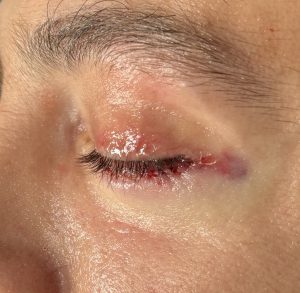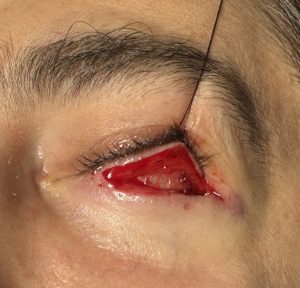Lower eyelid reshaping generally refers to elevating the level of the lower eyelid to varying degrees. This generally refers to the outer 1/2 or 2/3s of the lower lid to treat congenital rounded eyes and excessive scleral show to taking a more horizontal lower eyelid to a more elevated outer corner eye position. There are always three components to consider in such lower eyelid reshaping, infra/lateral orbital bone support, vertical length of the lid and the lateral canthal position. As a result the procedures of lateral canthoplasty, spacer grafts and infraorbital implants all have a potential beneficial role to play in various combinations or many times all three done together.
The spacer graft is an unappreciated need in lower eyelid reshaping as it adds more tissue to a vertically short lid. It has its history in lower eyelid reconstruction for retracted lids due to scar and introduces new tissue into a split orbicularis muscle. Once sewn in place it provides a definite upward push on the upper margin of the eyelid. (lash line) While there are three layers to the eyelid and a spacer graft only addresses one of them it does provide some lid expansion. But in works most effectively when combined with an inferior push (infraorbital implant and a superior pull. (lateral canthoplasty)


Much like putting a skin graft on an extremity wound contracture release the spacer graft puts interpositional tissue beween a released muscle layer for a similar purpose…added length. Its use as an isolated procedure is when the patient does not want to change the position of the outer corner of the eye and the underlying infraorbital bone support is adequate.
Dr. Barry Eppley
World-Renowned Plastic Surgeon





